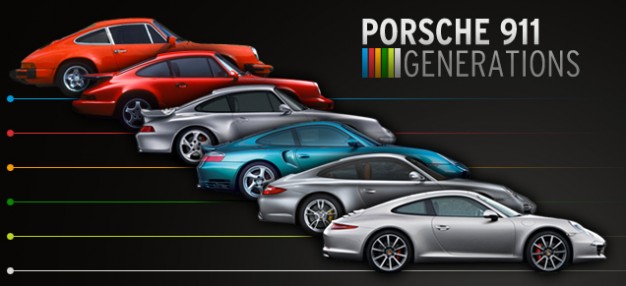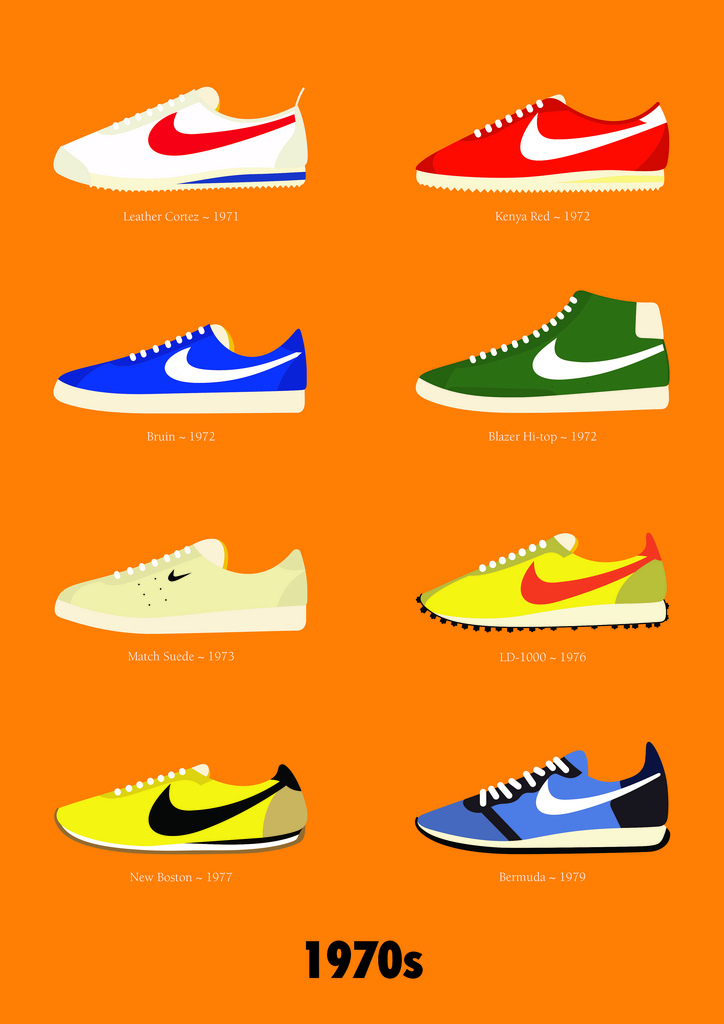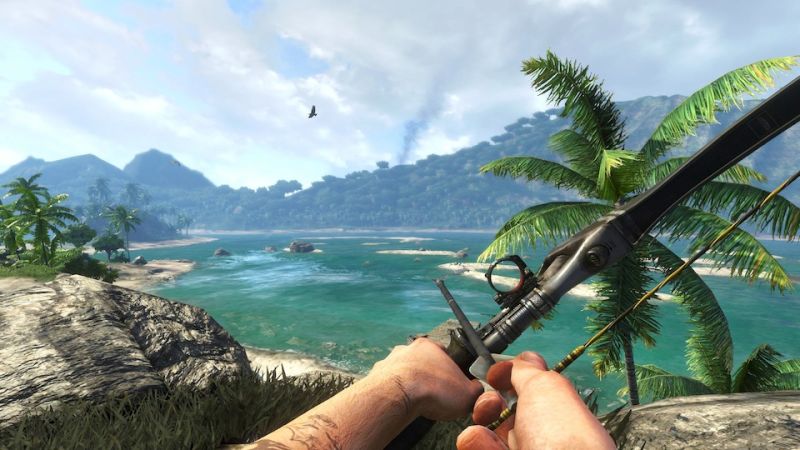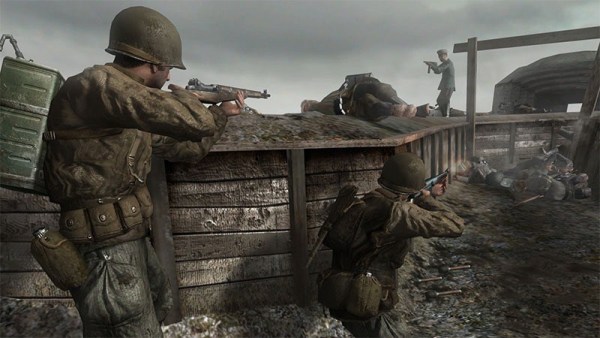Videogames and the Culture of Criticism

When I started writing about games four years ago, I set out with the mindset that I would be playing games and writing about them. That was it. A simple, uninformed dream of a job title and one that I quickly discovered was not at all correct. I thought it would feel like easy work; I was “playing games and writing about them” after all. How hard could that possibly be? Not the first time a thought I had in college sounded increasingly dumber the older I got.
But I was in college, I had an abundance of “free time” (I think my professors called it class), an Xbox 360, and a laptop. I was enamored by the idea of game writing as a lifestyle. I still am. Topics ranging from gender roles to race, morality and ethics to inclusiveness, beauty and creation to mechanics. A list that goes on and on. I wanted to write about things that mattered, and praise things that frequently fell to the wayside.
When I dove in, everything was happy and easy. It’s games after all. But soon I discovered that journalism is far more difficult than I assumed. I wrote about games I hated and that I loved; topics and genres that gave me energy and filled me with dismay. In the short 5 years that I have been doing this I have written about games like The Last of Us and issues like Gamergate and it has made me appreciate this craft with new eyes. Realizing that there are things that need to be written about, no matter how difficult.
Recently I have run into something that bothers me, maybe even more than ludonarrative dissonance (which is actually getting better in some games). I noticed it first in myself, catching my thoughts when describing games as “recycled” and “stagnant”. In one case, I even described a series as being completely devoid of creativity. I read that article again recently (bet you can’t find it) and realized, players and critics alike have become increasingly critical of the familiar.
In 1963, Porsche made the first 911, a bug-eyed, rear-engined sports car with a six-cylinder boxer engine. It was slick and powerful and came in a small package. Now, Porsche had made other cars in the past, and would go on to create different cars in the future. But that first 911 would turn out to be a lot more than just a new Porsche. It defined the company for the next five decades and continues to do so today.

In the 53 years that the 911 has been developed many things have been updated. The motor is water cooled now, rather than air cooled. ABS was developed and applied. Air bags, seat-belts, rally and race applications and modifications, impact bumpers, brake discs. The car has been in production for 53 years. When technology updated, it updated. But it never changed. Sure some things changed on the inside, but it has always had a rear-mounted, six-cylinder boxer engine. And of course things have changed on the outside, but they are cosmetic and minor. It has always stayed true to its form. Drive a 1963 Porsche 911 down the street today and anyone with half a brain will know, “That’s a Porsche.”
I am more a fan of the older, more boxy looking Porsche 911s, personally. The sharper edges, the whale tail, the bulbous headlamps. There is so much spirit in the old models, so much moxie. The newer Porsches are sleek, smooth, all of the things you would expect of a car from the 21st century. They just don’t appeal to me as much, and thats ok. But would I drive one if I could? Yes.
The fact that a car could be that popular and, on the outside and inside, fundamentally change so little, doesn’t seem to surprise anyone that I know. Car enthusiasts and laymen alike. It is a beautiful car, always has been, always (I presume) will be.

My wife bought a pair of tennis shoes recently. Why I, or anyone for that matter, still calls them tennis shoes is beyond me. I have never played tennis in my life, nor do I plan to (note to self, do not start playing tennis, you'll never live this down). Anyway, she bought a pair of sneakers (but who sneaks in…never mind) recently and I realized something. Her new shoes are the same as her old shoes. Arch supporting sole, cushioned heel, laces on top in a crossing pattern, and mesh weave on the top for breathability. But they look different. And they're new. I put new in italics there because I wanted to put emphasis on it.
New is important to many people. New shoes, new cars, new homes, new girl/boyfriends, new phones, new clothes. We like things to be new, but we don't like things to be different. Our species dismal history of racism, slavery, inequality, and xenophobia are no small testament to that. We like things to be new but we don't like things to change.
You started reading this because it was on a videogame blog and sounded like it was going to be interesting. I’m sure I have lost many of you already. For those of you still here. Bear with me. My point is swiftly approaching.
Take all of the information I have given you so far, plant it somewhere deep in your brain, and begin to think about the videogame industry. For an industry devoted to being on the cutting edge of technology, many times more so than it should, it is mired by the idea that if it isn't new and different it lacks development. It lacks character.
Look, I am in no way trying to be petty here. I believe there is a harsh double standard that exists in this industry. An industry I love more than damn near anything (sorry babe). If a game is released that mimics its predecessor in too many ways it is torn down to the dirt it was built from. Far Cry 4 was Far Cry 3 in a new location. But Far Cry 3 was a resounding success that put a series that was, in my eyes, beginning to lose relevance back on the map. Diving in with the nearly 50 games that made the bow and arrow the weapon of choice in 2012. And Far Cry’s bow mechanics were so good, they were imitated (to some degree) in Tomb Raider, The Last of Us, Crysis 3, and Thief.

Far Cry 3 was good. Damn near great, despite the fact (or maybe because of the fact) that the main character was a bit of a “bro.” It set a standard for beautiful, living, breathing open worlds. Far Cry 4 was only a little different. Replace tropical island with the Himalayas, replace the white, bro main character (who killed a lot of brown folks…but that is probably a different conversation) with a young man with Nepalese heritage and family ties to the civil war that rages in the mountains and valleys, replace fields of marijuana with fields of opium, sprinkle a few elephants, a climbing rope, and those fucking eagles, and you had a game that was familiar, fun, and arguably a bit better than its older brother.
I almost never heard that kind of review from colleagues playing the title. I heard, “It’s just more Far Cry 3,” or, “It is just more of the same, recycled and reskinned.” But is that assessment a damning one, or should it serve as an impetus for fans of its predecessor to return? I loved flying around Nepal with reckless abandon, bowhunting baddies, freeing predators to do the hunting for me, and breathing deep the opiated fumes of destruction.
So many people look at one game’s similarities to another and overlook how it has honed those mechanics, tuned those graphics, or twisted convention. Yes, Tomb Raider is Uncharted on Xbox, but shouldn't that make us happy? Uncharted is a landmark of storytelling achievement and adventure gameplay. Give me more any time you can. Put a strong female character front and center and I will literally throw my money at it (wait…not what I meant). Yes, Fallout 4 is Skyrim with guns. But who doesn't want to play Skyrim with fucking guns?
Now don't get me wrong, the process of recycling mechanics and themes can get old. How many military shooters can look into the future before we grow tired of the idea? How many racing games will lean on the circuit structure before we yearn for more open world experiences? How many open world adventures can require us to climb some kind of tower to unlock parts of the map before we stop scaling? I used to be very critical of the Call of Duty series for similar reasons (remember that creativity insult?). But let me paint the picture framed in my mind on the series now.

In 2003 Infinity Ward made, and Activision published, the first Call of Duty. A gritty, boots on the ground interpretation of the human struggle of World War II, complete with gore, language, and mind-numbing displays of military power and devastation. It was fast-paced, fun, and always found a way to bring people back for more. Activision had published numerous games in the past, and would go on to publish many more in the future, but that first Call of Duty would turn out to be a lot more than just a new game. It defined Activision and the shooter genre for the next decade and continues to do so today.
In the 13 years that Call of Duty has been developed, many things have been updated. The setting has changed, many times. From the sand and mud of World War II to the rain and heat of Vietnam to the glass and steel of modern times and beyond. The engine has been updated, allowing for more fluid frame rates and more realistic visuals. The sound has evolved from a similar staccato of clicks and pops to a wide range of deep thumps and demonic raps. The series has been in development for 13 years. When technology updated, it updated, but it never changed. Sure some things changed on the inside, but it has always been a gritty, boots on the ground interpretation of the human struggle of worldwide combat. While these things have changed on the outside, they are overwhelmingly aesthetic, cosmetic, and relatively minor. Play the original Call of Duty today and anyone with half a brain will know, “That’s Call of Duty.”
And while I am a fan of the older, more story centered Call of Duty titles, with Soap and Price and Ghost and Makarov; so many characters, so much to say, and so many gut wrenching plot twists stirred in to make the pot all the more aromatic, the newer Call of Duties are smoother, faster, persistent. All of the things I want in a game today.

Call of Duty remains popular, wildly so, and on the inside and outside has changed so little, fundamentally. This shouldn’t surprise anyone. It is a polished, well running, powerhouse of a game. Always has been. I have learned to appreciate the idea that, in games, “if it isn’t broken, don't fix it,” still applies. And I have found that appreciating the small changes, the small tweaks, allows me to find more character in titles I previously thought wholly lacked imagination.
While a game like Call of Duty may look like the same thing over and over again, it continues to sell like hotcakes (side note: what do fast selling hotcakes sell like?). It has proven, with no lack of authority, that it is the game that players want. Perhaps we could do ourselves a favor by stepping back, looking at the miracle we are playing as a whole, and understanding the tremendous amount of work that goes into every title released.
After all, when was the last time you made a fucking game?
~Caleb
